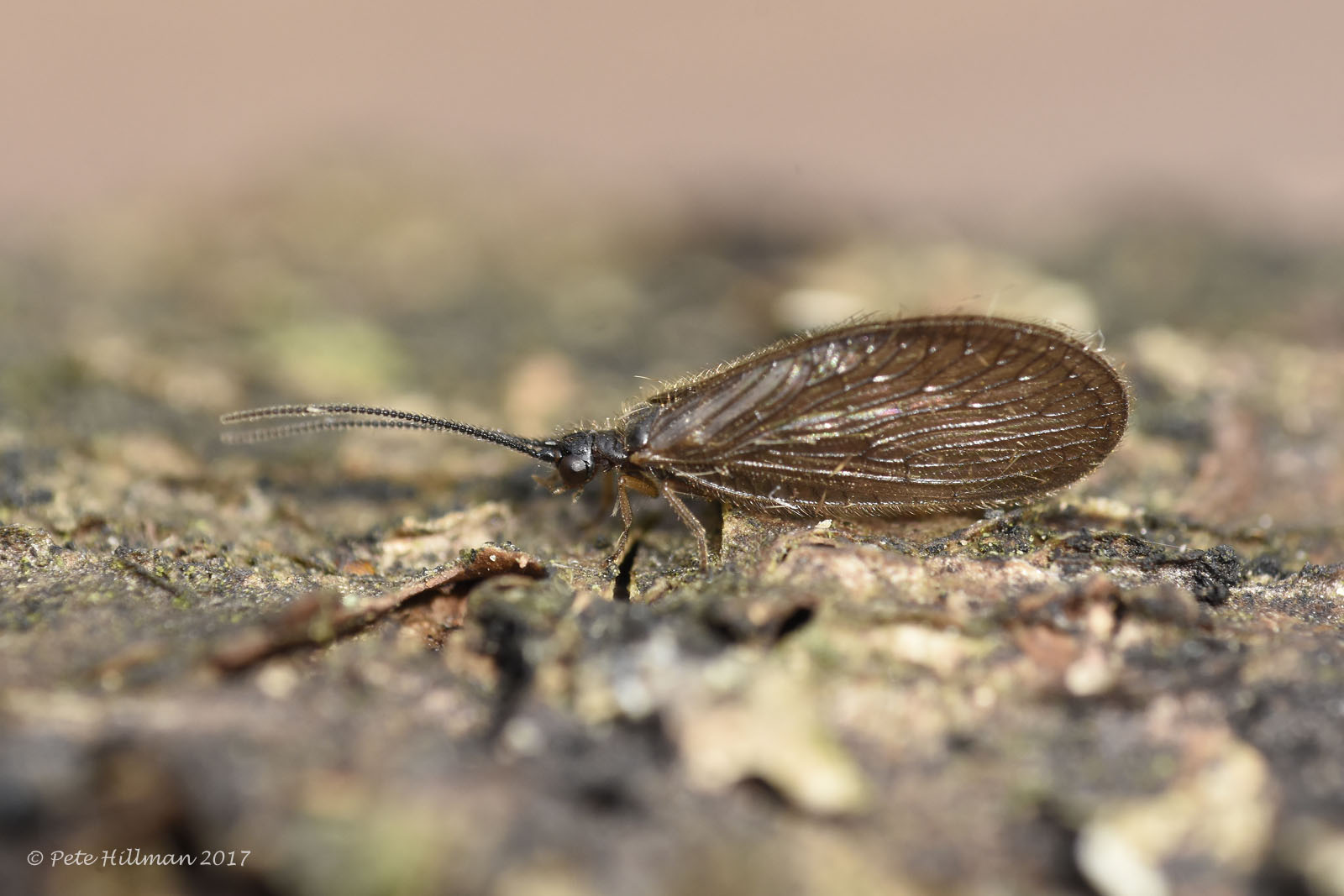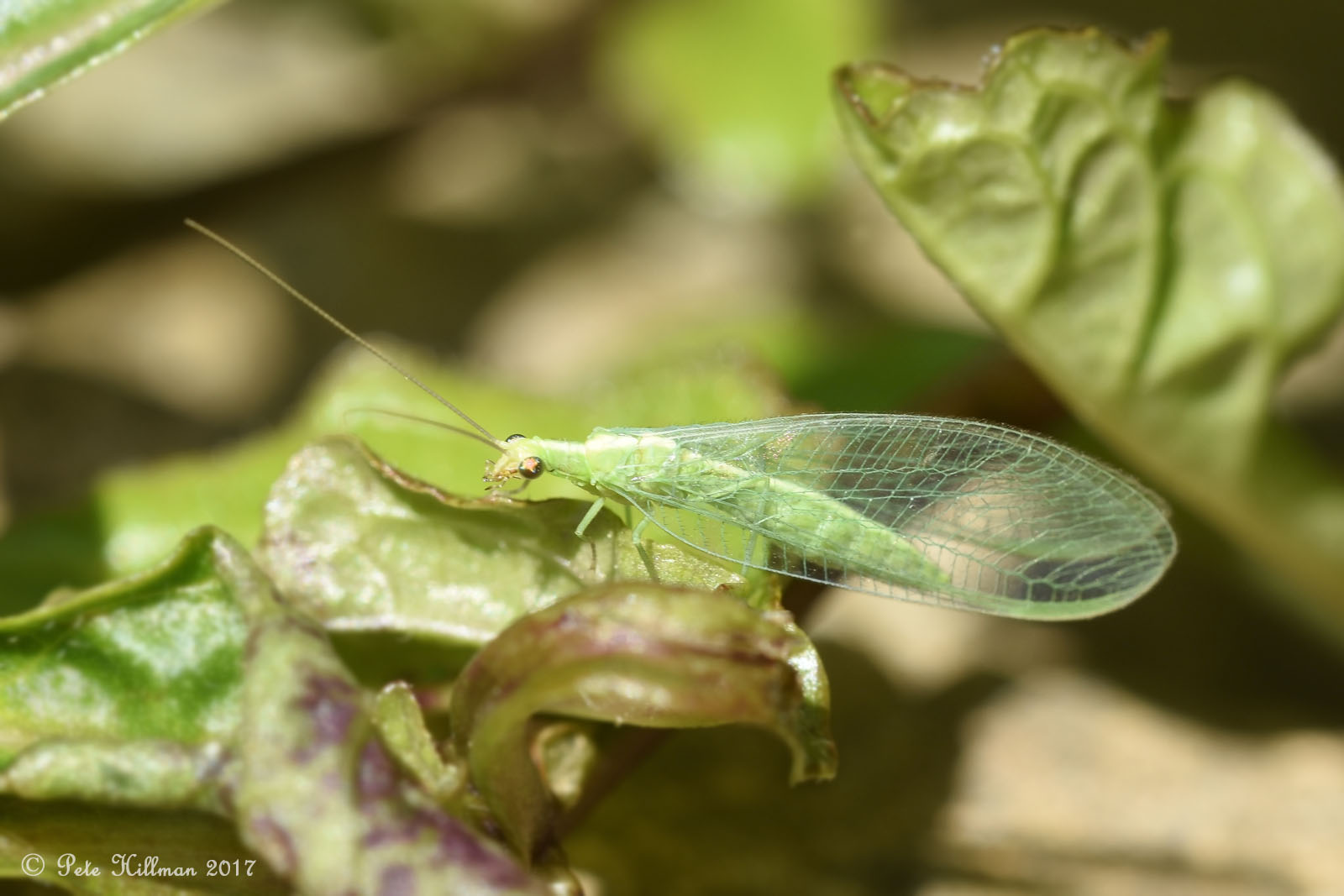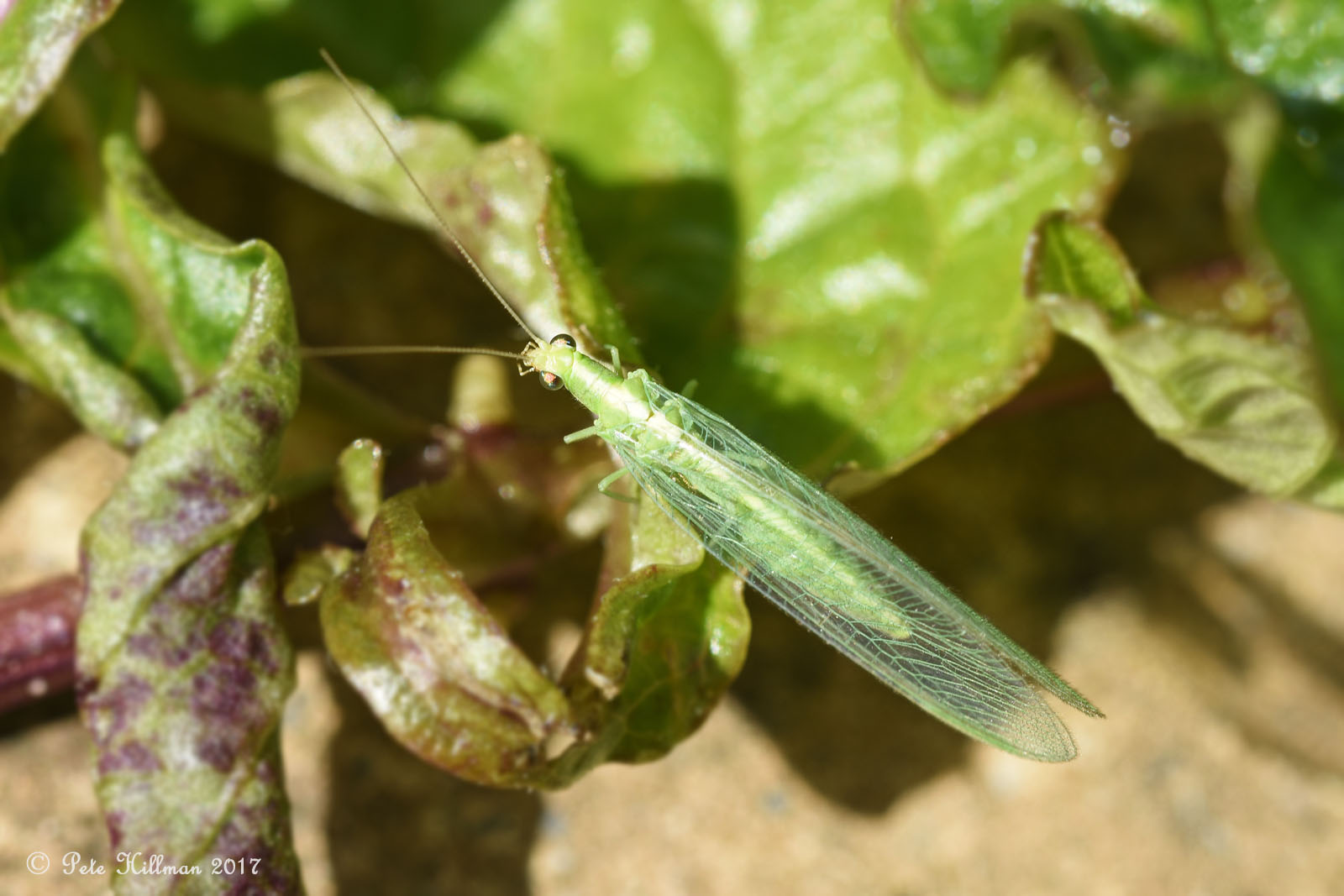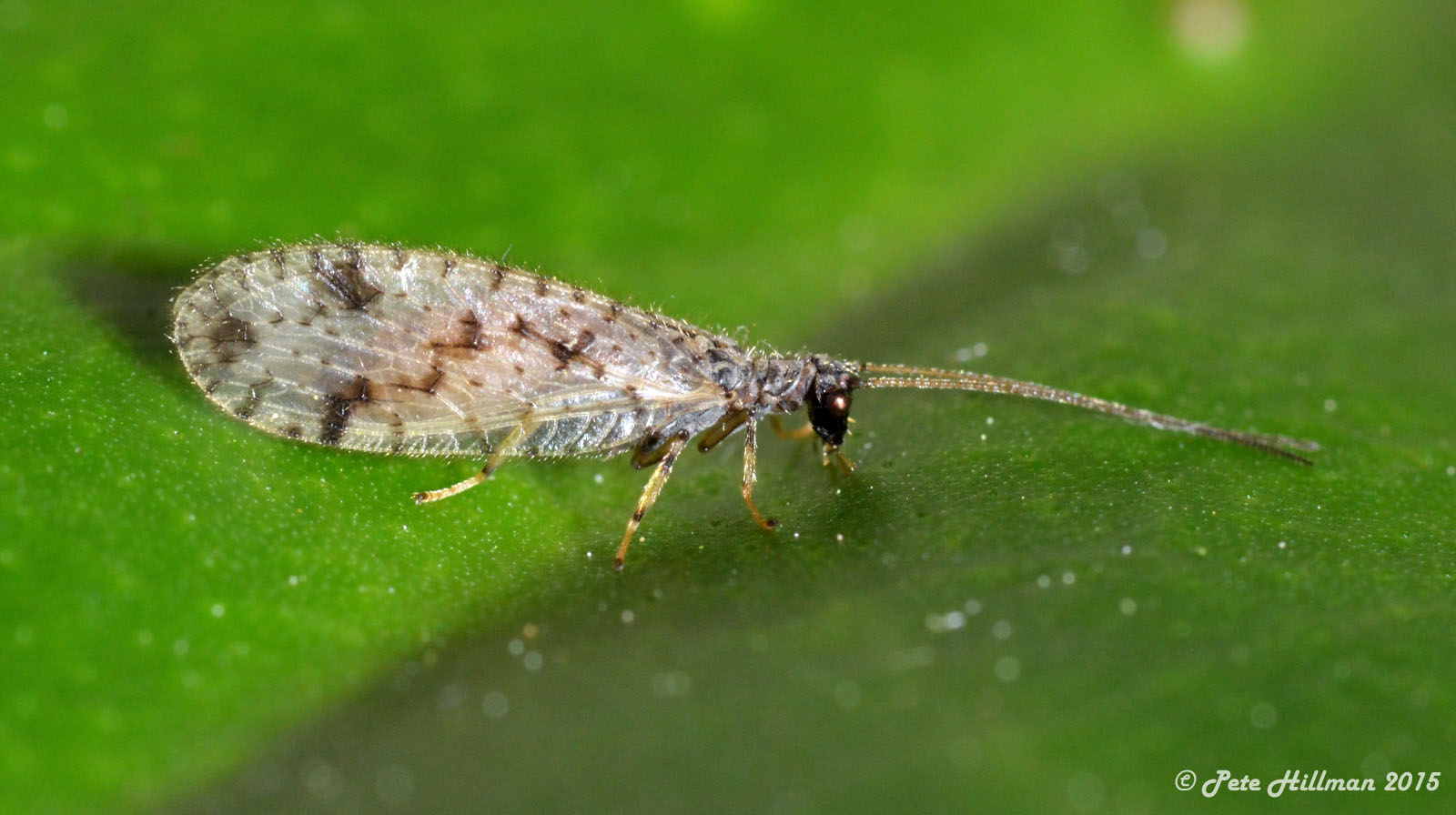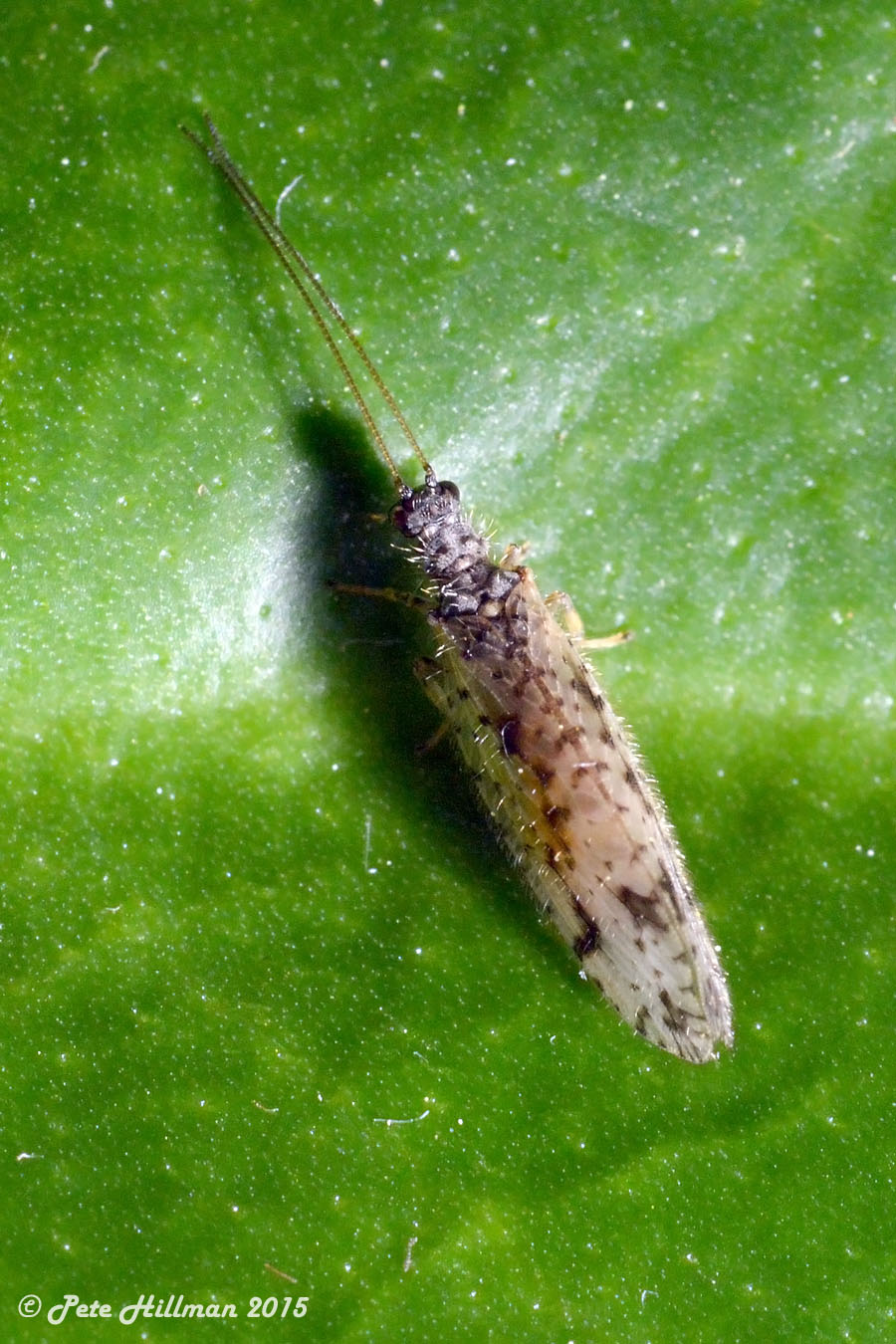Chrysoperla carnea
A pale green species with clear green wings which are held tent-like over the body when at rest. This species lacks the dark head markings other similar species are identified by, but has a light yellowish-green stripe running down the centre of its body. Overwintering adults can be straw-coloured with red spots on the abdomen. Length 15mm. Similar to Chrysopa perla.
Both adults and larvae are avid aphid eaters, and can decimate numbers, so much so they are used as a biological pest control agents.They not only feed on aphids, but other small insects like mites and leafhoppers. The adults also eat pollen and honeydew.
Seen all year round. Found in all types of vegetation, along woodland rides, in hedgerows, and also gardens. They are often seen at dusk as weak fliers, and they are attracted to light at night. Common and widespread.
Photographs taken July 2015 and June 2016, rear garden, Staffordshire. The adult above was attracted to the light of my moth trap.

